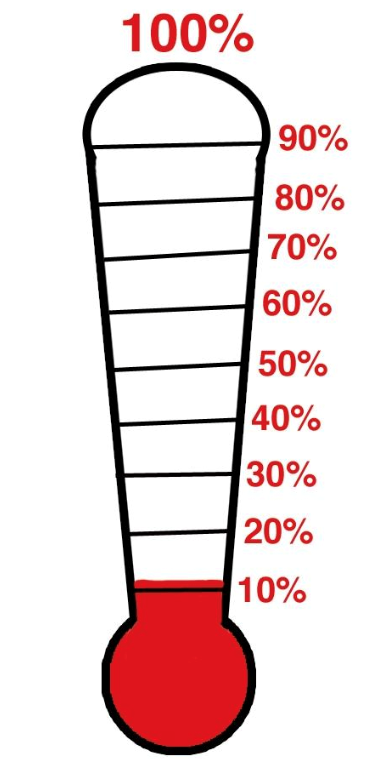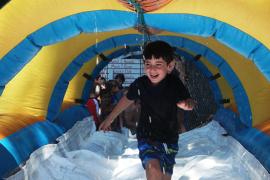Hello camp evaluators! Welcome to Part 3 of my series on measuring enrollment. When I started this series, I believe I had in mind that it would be a single blog, but that blog extended into two and here we are at Part 3. The fact that this series has blossomed like this is an indicator of the thing we are dealing with — enrollment as a concept is more expansive and complex than it might seem.
Thus far, we’ve established that enrollment is one type of data within a much larger menu of data options, and these options are organized into a hierarchy in terms of their ease of measurement and the power of their meaning. Enrollment sits somewhat lower in this hierarchy because it is relatively easy to capture, but also insufficient in telling the whole story of what you do at camp. But used with multiple options from that menu enrollment is a very powerful tool.
In Part 2, we explored several simple formulas for calculating enrollment, including static counts of campers, retention rates, and enrollment in relation to capacity, or camper-days. The moral of that story was, once again, no single measure of enrollment does the trick, but together they can give you multiple perspectives on if and how you are serving the campers you want to be serving.
In this post (maybe the last in this series, maybe not — who knows?), I want to wrestle with the concept of enrollment at a much deeper level, in the way scholars in the field of youth development wrestle with it. And believe me, they wrestle! Enrollment is part of a fundamental question at the root of youth-serving programs: how much is enough?
Enough, in this sense, refers to enough of whatever you are hoping campers will get out of their experience at camp. For some, this means personal growth, others it means social skills, and for others it might be as specific as sport or art-based skills. When we ask this question, we ask how much time at camp is necessary to achieve our youth development goals?
Notice here that I am introducing another dimension of enrollment. In addition to enrollment as an indicator of presence (aka, the number of kids that show up), we must also think about enrollment as an indicator of depth (aka, what each of those kids gets out of their experience). So, when we ask how much is enough, we are talking both about two different dimensions related to enrollment.
Youth development researchers add to this a third and sometimes even fourth dimension. In a 2005 special issue of New Directions for Youth Development, prominent youth development researchers distinguish between enrollment, attendance, and engagement, and suggest, over the course of seven research articles that all three are critical if youth programs, such as camps, are to achieve their enough. Enrollment, in framework of these terms, is an indicator of access. If a child is enrolled in a camp, it is likely because (a) that child’s parent, caregiver, or community member had the resources—time, knowledge, motivation, and money—to enroll that child in camp, and (b) the camp had capacity for that camper. From this perspective, enrollment has far less to do with the camper than it has to do with parents, caregivers, community members, and the nature of the camp itself.
Attendance represents the frequency and duration of a child’s participation at camp — it’s typically the consequence of enrollment (but not always---day camp directors know best that a kid enrolled does not always equal a kid that shows up). Fiester and her colleagues (2005) suggest that there are four indicators of attendance: absolute attendance, intensity of attendance, duration of attendance, and breadth of attendance. And while this seems like it might apply more to day camp programs, the notion of intensity, duration, and breadth has big implications for how we think about enrollment at overnight camps too.
Before we look more closely at intensity and breadth, I want to first make a comment about duration as an indicator of attendance. This is a big topic for camp people, both in terms of session length and the number of sessions a camper should attend to get the benefits of camp we are hoping they will get. Again, it’s a matter of how much is enough? In science, we refer to this as dosage, as in the amount necessary to achieve the desired outcome. At camp, dosage is not quite as simple, although we do have some evidence to suggest that the value of camp is enhanced with increased camp attendance; however, we do not know which indicators of attendance this represents. Therefore, I urge us to think beyond simply “absolute attendance” when considering the impact of dosage on camper outcomes.
Instead, let’s think about intensity and breadth as two levers we can play when we are thinking about enrollment. Researchers Weiss, Little, and Bouffard (2005) wrap these concepts under the broader term engagement, which, in its simplest form, means how into it a kid might be. So, whether we are calling it intensity (the kid is deeply interested, challenged, having fun), breadth (variety), or engagement (if they are in to it or not), this dimension is critical to our overall enrollment story.
So, how can we capture campers’ engagement? Ask them! There are tons of ways to do this, but one that’s insanely simple and actually legit, from a scientific perspective, is a Fun-O-Meter. Simply raw something like this on a small piece of paper, and have campers color it in to represent how much fun they’ve had in a given activity, during the day, or over the course of a session.

Fun, believe it or not, is a great indicator of engagement, and something most kids can tell you about if you ask them.
Putting this all together, what we see is a more holistic picture of the camp experience in which enrollment plays only a third. Measuring all three dimensions that we’ve discussed here is certainly more complex than doing a simple roll call, but it is a far more powerful way to tell the story of who you are serving and how. To recap:
- Measure enrollment by assessing access to your program. If enrollment is down, is that because parents, caregivers, or community members do not have or do not know they have access to your camp? Or are there other barriers, like a difficult registration system or programs that fill in minutes? Again, enrollment is far more about everything except the camper.
- Measure attendance first by considering absolute attendance (counting kids) and duration (retention rates). Consider investing in ways to promote increased dosage of camp, perhaps by sharing with parents, caregivers, and others who support kids to go to camp that duration matters.
- Measure engagement by asking campers if they are having fun. If you want, dig further into their engagement by asking questions about their levels of interest, challenge, and if time passed quickly while they were in the activity or while at camp.
Piecing these bits of information together is a matter of looking at each independently, and then in relation to one another. In doing so, you’ll have a far richer picture of enrollment, and a terrific story to tell about the power and importance of your camp.
Photo courtesy of Camp Ketcha in Scarborough, ME
Laurie Browne, PhD, is the director of research at ACA. She specializes in ACA's Youth Outcomes Battery and supporting camps in their research and evaluation efforts. Prior to joining ACA, Laurie was an assistant professor in the Department of Recreation, Hospitality, and Parks Management at California State University-Chico. Laurie received her Ph.D. from the University of Utah, where she studied youth development and research methods.
Thanks to our research partner, Redwoods.
Additional thanks goes to our research supporter, Chaco.
The views and opinions expressed by contributors are their own and do not necessarily reflect the views of the American Camp Association or ACA employees.





